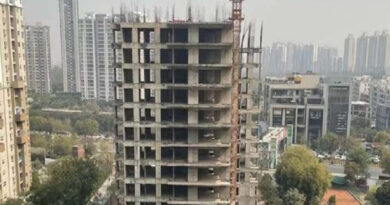V-shape is recovering in Indian economy, GDP grew 23% in September quarter over June
The Indian economy is seeing a recovery of V-shape, as GDP growth for the July-September quarter of this business year was 23 percent compared to the June quarter. This was stated in the Monthly Economic Review released by the Finance Ministry for November. The country’s GDP fell 23.9 percent year-on-year in the June quarter, but the level of decline in the September quarter fell to just 7.5 percent.
The review said that the V-shape recovery in the second quarter of this financial year only means that the Indian economy is strong and can improve rapidly. The gradual removal of lockdown restrictions and the relief package given under the Self-Reliant India Mission have brought the economy back on track. Recovery is getting the most support from agriculture and then from construction and manufacturing.
Uncertainty increased worldwide in October and November
Recently, new cases of coronavirus infection due to the festive season saw an increase, but now the numbers are decreasing. Other countries also have the same trend. Uncertainty rose worldwide in October and November, as global composites PMI and commodity trade showed a slight increase during this period, but the energy and metal prices showed a decline.
Inflation decreased in developed countries, while inflation increased in emerging economies
According to the review report, inflation has decreased in developed countries, while inflation has increased in emerging economies. This means that supply-side disruption has a greater impact on weaker economies. Stock market trends suggest that the level of hope among investors remains very high. The weakening of the dollar in November has strengthened growth prospects in the rest of the world.
Economic uncertainty in the country is not expected in December quarter
Regarding the third quarter (October-December), the government report states that even though some indicators have seen a decline in November, the worldwide economic uncertainty is not expected to be seen in India. The area under rabi crops has increased and the reservoirs are full of water. This augurs well for the agriculture sector to grow this financial year.
Increased employment and income in rural areas
Wages have increased in villages due to increased sowing of Rabi crops and the Mahatma Gandhi National Rural Employment Guarantee Scheme (MGNREGA). The additional allocation of Rs 10,000 crore in the Pradhan Mantri Garib Kalyan Rozgar Yojana will further increase employment and income in rural areas. Income in rural areas is also rising due to the increase in the minimum support price (MSP) for both Kharif and Rabi crops and progress in paddy procurement this financial year.
The second wave of coronavirus is a challenge
Regarding the risks, the report noted that the second wave of the coronavirus pandemic is a challenge. But with the progress of the vaccine and the adoption of a virtual way of working in the contract sensitive sector, a decline like the June quarter is unlikely to be seen again.

